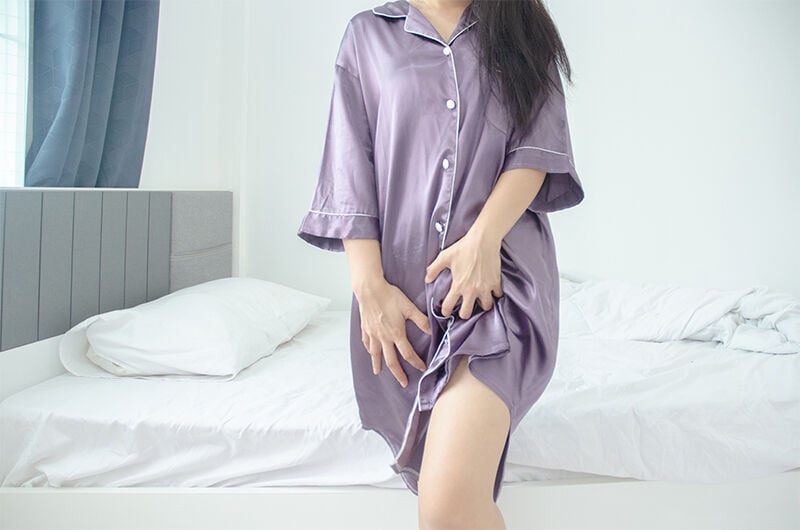Many people have stitches after delivering a baby. Stitching helps close up the incision area neatly and speeds up the healing process. In this article, we’ll explain how to properly take care of your post-delivery stitches.
-
Tracking cycle
-
Getting pregnant
-
Pregnancy
-
Help Center
-
Flo for Partners
-
Anonymous Mode
-
Flo app reviews
-
Flo Premium New
-
Secret Chats New
-
Symptom Checker New
-
Your cycle
-
Health 360°
-
Getting pregnant
-
Pregnancy
-
Being a mom
-
LGBTQ+
-
Quizzes
-
Ovulation calculator
-
hCG calculator
-
Pregnancy test calculator
-
Menstrual cycle calculator
-
Period calculator
-
Implantation calculator
-
Pregnancy weeks to months calculator
-
Pregnancy due date calculator
-
IVF and FET due date calculator
-
Due date calculator by ultrasound
-
Medical Affairs
-
Science & Research
-
Pass It On Project New
-
Privacy Portal
-
Press Center
-
Flo Accuracy
-
Careers
-
Contact Us
How to Care for Your Stitches After an Episiotomy to Minimize the Risk of Infection


Every piece of content at Flo Health adheres to the highest editorial standards for language, style, and medical accuracy. To learn what we do to deliver the best health and lifestyle insights to you, check out our content review principles.
Episiotomy
Episiotomy is a surgical cut made in the area between the vagina and the anus to widen the vaginal opening for delivery.
Reasons for an episiotomy
Experts don’t recommend episiotomies for everyone, so your health care provider will use their expertise and judgment to determine if it’s right for you.
The most common reasons for an episiotomy are:
- Your baby's shoulder is stuck behind your pelvic bone (shoulder dystocia)
- Your baby has an abnormal heart rate pattern during your delivery
- You need an operative vaginal delivery (using forceps or vacuum)

How to care for stitches after delivery to minimize the risk of pain and infection
Episiotomy stitches shouldn’t cause too much of a problem if you’re able to take care of the wound properly. If you have stitches from an episiotomy, make sure to visit your health care provider regularly and follow their instructions precisely.
Here are some tips to help speed up your recovery and avoid infections.
- Follow hygiene procedures.
It's very important to stay clean and take good care of your stitches after giving birth. Good hygiene will help prevent the area from getting infected. It is also crucial to wash your hands before and after using the toilet. The bacteria on your hands can easily cause postpartum complications. Your health care provider may also provide you with a squeeze bottle of antiseptic that can help keep the perineal area clean.
- Take your time to rest.
Rest is very important for your recovery. Resting is a good way to recover after delivery and heal your wound. Avoid strenuous work as you recover. Ask for help from your relatives and friends as much as you need it.
- Make use of ice packs.
Putting ice on your stitches can help heal your wound faster by easing inflammation. You can get ice packs that you can wear just like pads. These ice packs should be worn for about 10 to 20 minutes to ease pain from stitches after birth. These ice packs are disposable and should only be used once to prevent contamination of the cut area.
- Expose the stitches to fresh air.
Exposing the stitches to fresh air can help the healing process. Lying on your bed without underwear for 10 minutes once or twice a day may be helpful.
- Try stool softeners.
Your health care provider can prescribe you with a stool softener. This type of medication can make it easier to move your bowels and reduce straining. Apart from preventing straining, stool softeners can also help relieve pain from the stitched area during postpartum recovery.
- Abstain from sex.
Having sex immediately after giving birth can be painful. It can also complicate the recovery process. It’s better to wait until your wound has fully healed and your stitches are out.
Take a quiz
Find out what you can do with our Health Assistant
How long until the stitches are out?

On average, it takes about four to six weeks for dissolvable episiotomy stitches after birth to heal. Typically, your health care provider will check your stitches at your first postpartum checkup — usually six weeks after delivery.
At this time, your health care provider will also let you know when you can start having sex again. Waiting for the all-clear from your health care provider will help avoid bleeding after intercourse. They can also give you some tips to manage other postpartum complications.
Your health care provider might also recommend Kegel exercises to help restore muscle tone around your perineum.
When to seek professional care after episiotomy stitches
You might need professional care for your episiotomy stitches if you notice any signs of infection around the wound. Usually, infected stitches are caused by the presence of bacteria — staphylococcus, streptococcus, enterococci, or pseudomonas — in the area. Make sure to visit your health care provider if you experience any of the following:
- Swelling around the stitches
- Warm sensation around the wound
- Blood or pus with a foul smell coming from the stitched area
- Fever or chills
- Severe perineal pain
- Swollen lymph nodes
It’s important to get quick medical attention in the case of an infection. So if your health care provider isn’t available, you may need to go to the emergency room.


Hey, I'm Anique
I started using Flo app to track my period and ovulation because we wanted to have a baby.


The Flo app helped me learn about my body and spot ovulation signs during our conception journey.


I vividly
remember the day
that we switched
Flo into
Pregnancy Mode — it was
such a special
moment.
Real stories, real results
Learn how the Flo app became an amazing cheerleader for us on our conception journey.




